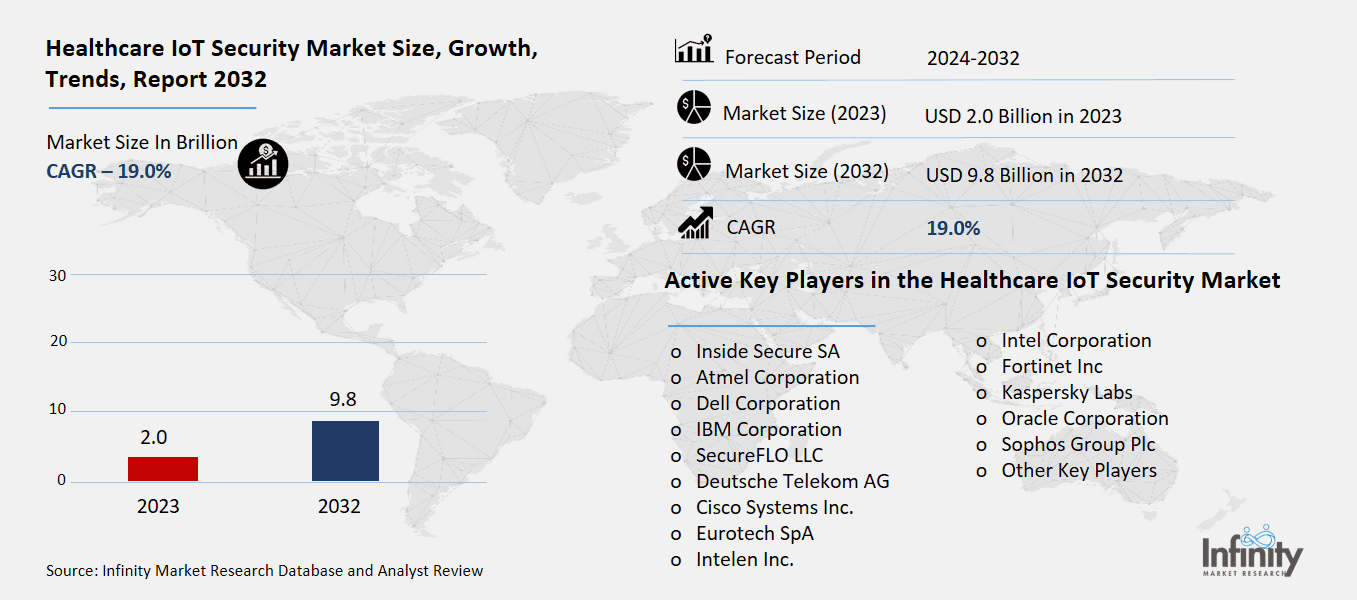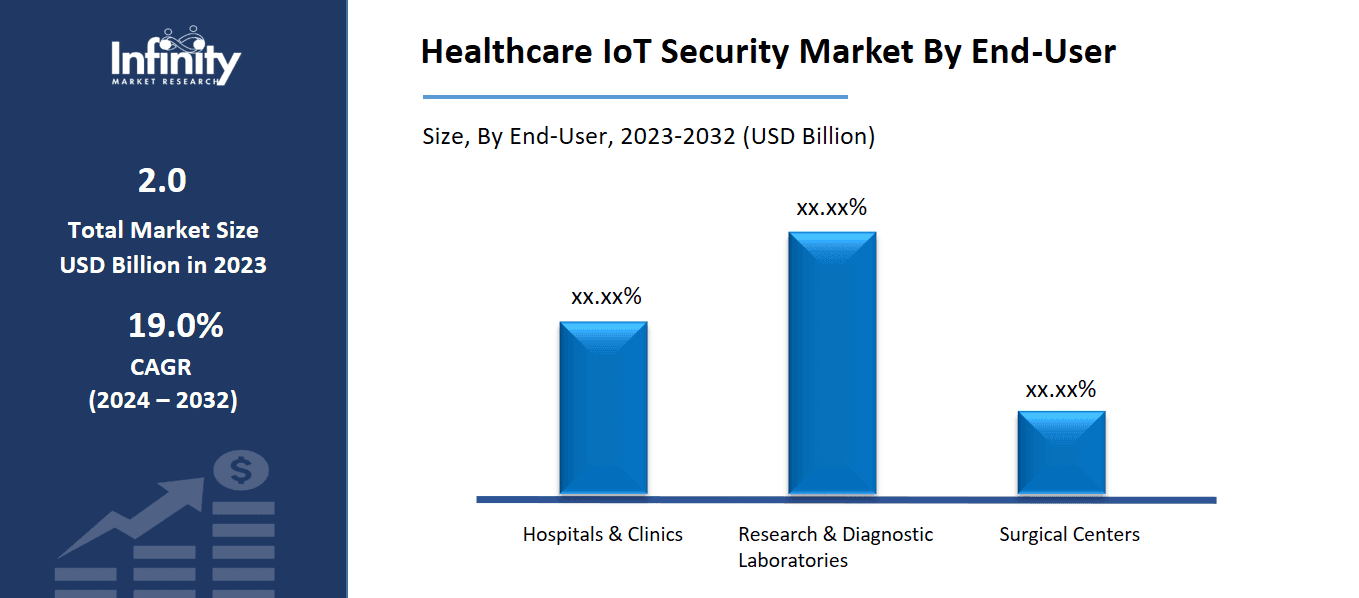
🔐 Secure Payment Guaranteed
Safe checkout with trusted global payment methods.
🌟 Why Choose Infinity Market Research?
At Infinity Market Research, we dont just deliver data — we deliver clarity, confidence, and competitive edge.
In a world driven by insights, we help businesses unlock the infinite potential of informed decisions.
Here why global brands, startups, and decision-makers choose us:
Industry-Centric Expertise
With deep domain knowledge across sectors — from healthcare and technology to manufacturing and consumer goods — our team delivers insights that matter.
Custom Research, Not Cookie-Cutter Reports
Every business is unique, and so are its challenges. Thats why we tailor our research to your specific goals, offering solutions that are actionable, relevant, and reliable.
Data You Can Trust
Our research methodology is rigorous, transparent, and validated at every step. We believe in delivering not just numbers, but numbers that drive real impact.
Client-Centric Approach
Your success is our priority. From first contact to final delivery, our team is responsive, collaborative, and committed to your goals — because you re more than a client; you re a partner.
Recent Reports
Global Myopia Control Lenses Market Report 2025-33
Hyaluronic Acid-based Dermal Fillers Market Report
Healthcare IoT Security Market
Healthcare IoT Security Market Global Industry Analysis and Forecast (2024-2032) by Component (Solutions and Services), Security Type (Application Security, Cloud Security, Network Security, and End Point Security), End-User (Hospitals & Clinics, Research & Diagnostic Laboratories, and Surgical Centers) and Region
Apr 2025
Healthcare
Pages: 138
ID: IMR1907
Healthcare IoT Security Market Synopsis
Healthcare IoT Security Market Size Was Valued at USD 2.0 Billion in 2023, and is Projected to Reach USD 9.8 Billion by 2032, Growing at a CAGR of 19.0% From 2024-2032.
The Healthcare IoT Security Market experiences significant growth because hospitals clinics and home care facilities actively implement Internet of Things (IoT) solutions. Connected medical equipment together with wearables and remote patient monitoring systems now require greater cybersecurity protocols to defend sensitive patient information from cyberattacks. Healthcare IoT Security challenges include unauthorized entry to sensitive data and theft incidents in addition to ransomware attacks and requirements to comply with HIPAA and GDPR. The market advances because of AI threat detection technology advancements together with blockchain secured data systems and zero-trust security designs. Among leading stakeholders in this field stand cybersecurity organizations and government-compliant healthcare IT solution providers and vendor companies that deal with IoT devices specifically for the healthcare sector. Healthcare industry development receives a boost from the rise of digital investments in healthcare together with the implementation of government data protection regulations.

Healthcare IoT Security Market Driver Analysis
Increasing Investment in Digital Healthcare
Public investments in healthcare IT infrastructure together with government support for cybersecurity solutions act as main growth factors within the Healthcare IoT Security Market. Healthcare organizations must implement robust cybersecurity measures because they adopt digital technologies rapidly which encompasses electronic health records (EHRs) and telemedicine and IoT-enabled medical devices. Governments alongside regulatory bodies across the world understand the essential need for protecting healthcare data infrastructure so they invest more resources through legislation. Federal initiatives such as HITECH Act and cybersecurity grants through CISA (Cybersecurity and Infrastructure Security Agency) provide assistance to hospitals for enhancing their cybersecurity measures within the United States. Healthcare institutions throughout the European Union now need to enhanced cybersecurity requirements because of the NIS2 Directive.
Healthcare IoT Security Market Restraint Analysis
Complex Integration with Legacy Systems
Healthcare organizations often use legacy IT systems that were never designed to accommodate the current cybersecurity threat environment. These legacy systems are often not only unencrypted, but also deficient in the security updates and protocols needed for resistance to more modern cyberattack methods. Many hospitals and clinics also work on tight budgets, making it difficult to replace or upgrade old infrastructure. Legacy medical devices like older MRI machines and infusion pumps frequently operate on older operating systems like Windows XP or Windows 7, which are no longer security patched. This means the potential for ransomware, data breaches and hackers gaining access is higher than ever.
Healthcare IoT Security Market Opportunity Analysis
Expansion of Telehealth and Remote Patient Monitoring
New telemedicine along with remote healthcare developments produced substantial growth of requirement for secure digital platforms. Telemedicine and remote healthcare services have experienced rising utilization from patients and healthcare providers yet data privacy alongside cybersecurity now require concentrated focus because of mounting patient information. Telemedicine platforms which manage sensitive patient information and conduct real-time video consultations as well as process electronic prescriptions make ideal targets for cyber attackers who seek to perform data breaches and execute phishing attacks with ransomware. These platforms must adopt strong security features to adhere to medical regulations such as HIPAA, GDPR, HITECH because they include end-to-end encryption together with multi-factor authentication (MFA) and AI-powered threat detection abilities. 5G technology together with cloud-based telehealth services make it necessary to develop strong cybersecurity solutions that safeguard patient information when shared through decentralized systems.
Healthcare IoT Security Market Trend Analysis
Blockchain for Secure Health Data Management
Healthcare cybersecurity professionals are adopting Blockchain technology as an effective solution because it enables tamper-proof storage with distributed management and visible data operations. Healthcare providers address the growing security threats through blockchain technology which protects electronic health records (EHRs) as well as medical transactions and patient consent management. Through the blockchain mechanism medical facilities can protect patient information by developing an unalterable digital ledger where hackers would struggle to modify protected health data. Smart contracts enable safe automated personnel access verification so authorized staff members alone can access patient records. Blockchain promotes secure sharing of medical information between healthcare entities and research facilities through its capabilities to ensure data privacy when performing data exchanges.
Healthcare IoT Security Market Segment Analysis
The Healthcare IoT Security Market is segmented on the basis of Component, Security Type, and End-User.
By Component
o Solutions
o Services
By Security Type
o Application Security
o Cloud Security
o Network Security
o End Point Security
By End-User
o Hospitals & Clinics
o Research & Diagnostic Laboratories
o Surgical Centers
By Region
o North America (U.S., Canada, Mexico)
o Eastern Europe (Bulgaria, The Czech Republic, Hungary, Poland, Romania, Rest of Eastern Europe)
o Western Europe (Germany, UK, France, Netherlands, Italy, Russia, Spain, Rest of Western Europe)
o Asia Pacific (China, India, Japan, South Korea, Malaysia, Thailand, Vietnam, The Philippines, Australia, New-Zealand, Rest of APAC)
o Middle East & Africa (Turkey, Bahrain, Kuwait, Saudi Arabia, Qatar, UAE, Israel, South Africa)
o South America (Brazil, Argentina, Rest of SA)
By Component, Solution Segment is Expected to Dominate the Market During the Forecast Period
The components discussed in this research study, the solution segment is expected to account for the largest market share of healthcare IoT security market in the forecast period, driven by the increasing demand for end-to-end security solutions that safeguard interconnected medical devices, patient information, and healthcare infrastructure. As medical professionals in particular, from the use of IoT-enabled medical devices, to telemedicine platforms, to cloud-based systems of healthcare, prioritize advanced security solutions including encryption, identity and access management (IAM), AI-driven threat detection, and blockchain based security, the speed of connectivity is fuelling the need for secure and capable system environments. These solutions protect sensitive patient information from cyberattacks, data breaches, and unauthorized access, helping ensure compliance with HIPAA, GDPR, and other regulatory standards.
By Security Type, the Cloud Security Segment is Expected to Held the Largest Share
The cloud security segment leads the Healthcare IoT Security Market with the biggest share because more healthcare organizations embrace cloud-based healthcare solutions like EHRs and telemedicine and remote patient monitoring and IoT-enabled medical devices. Upgrades to cloud-based infrastructure by healthcare facilities have become essential due to improved scalability and reduced costs and better technology interconnection. Consequently, securing cloud environments stands at the forefront of organizational priorities. Cloud security protects healthcare data through encryption alongside identity and access management (IAM) and AI-driven threat detection methods which prevent cyber-attacks that include data breaches and ransomware assaults and unauthorized access. Strong cloud security measures become necessary because healthcare organizations need to comply with regulations including HIPAA, GDPR and HITRUST.
By End-User, the Hospitals & Clinics segment is expected to held the largest share
Urban healthcare institutions will maintain leading market share in Healthcare IoT Security Market because they utilize extensive connected medical equipment combined with electronic health records (EHRs) alongside telemedicine platforms. Healthcare facilities which manage significant patient data volumes attracted cyberattacks and ransomware while exposing patient records to breaches so they must implement total cybersecurity defenses. Healthcare providers must implement advanced security solutions such as encryption along with AI threat detection and identify and access management (IAM) and network security measures because they depend on IoT-enabled devices to monitor patients and operate smart medical systems and automated workflows. The requirements of HIPAA and GDPR as well as NIST cybersecurity frameworks compel medical facilities to build up their security platforms.

Healthcare IoT Security Market Regional Insights
North America is Expected to Dominate the Market Over the Forecast period
North America leads the Healthcare IoT Security Market forecast period because it rapidly implements digital healthcare technologies while strengthening regulatory standards and investing more in cybersecurity capabilities. The local healthcare market benefits from tight collaborations between medical service providers and IoT hardware makers and cybersecurity companies which advance the development of AI for threat analysis and blockchain security and cloud-based medical solutions. The market progresses rapidly because both HIPAA in the U.S. and PIPEDA in Canada impose rigorous data protection rules that demand rigorous security requirements. More hospitals and healthcare facilities experience ransomware attacks so governments simultaneously with private entities allocate funding to develop IoT security solutions.
Recent Development
In November 2023, IBM introduced "IBM Trustworthy Healthcare," a comprehensive suite of solutions designed to safeguard healthcare data and connected medical devices throughout their lifecycle. This integrated offering includes threat detection, vulnerability management, and incident response, all specifically tailored to enhance the security of IoT-enabled medical equipment.
In December 2023, Cisco Systems announced the expansion of its “Cisco SecureX” platform to include specialized healthcare-specific security features. The enhanced solution provides unified visibility and control over medical devices connected to healthcare networks, along with advanced protection measures to strengthen security within these environments.
Active Key Players in the Healthcare IoT Security Market
o Inside Secure SA
o Atmel Corporation
o Dell Corporation
o IBM Corporation
o SecureFLO LLC
o Deutsche Telekom AG
o Cisco Systems Inc.
o Eurotech SpA
o Intelen Inc.
o Intel Corporation
o Fortinet Inc
o Kaspersky Labs
o Oracle Corporation
o Sophos Group Plc
o Other Key Players
Global Healthcare IoT Security Market Scope
|
Global Healthcare IoT Security Market | |||
|
Base Year: |
2023 |
Forecast Period: |
2024-2032 |
|
Historical Data: |
2017 to 2023 |
Market Size in 2023: |
USD 2.0 Billion |
|
Forecast Period 2024-32 CAGR: |
19.0% |
Market Size in 2032: |
USD 9.8 Billion |
|
Segments Covered: |
By Component |
· Biofuel · Gas-to-Liquid · Power-to-Liquid | |
|
By Security Type |
· Application Security · Cloud Security · Network Security · End Point Security | ||
|
By End-User |
· Hospitals & Clinics · Research & Diagnostic Laboratories · Surgical Centers | ||
|
By Region |
· North America (U.S., Canada, Mexico) · Eastern Europe (Bulgaria, The Czech Republic, Hungary, Poland, Romania, Rest of Eastern Europe) · Western Europe (Germany, UK, France, Netherlands, Italy, Russia, Spain, Rest of Western Europe) · Asia Pacific (China, India, Japan, South Korea, Malaysia, Thailand, Vietnam, The Philippines, Australia, New-Zealand, Rest of APAC) · Middle East & Africa (Turkey, Bahrain, Kuwait, Saudi Arabia, Qatar, UAE, Israel, South Africa) · South America (Brazil, Argentina, Rest of SA) | ||
|
Key Market Drivers: |
· Increasing Investment in Digital Healthcare | ||
|
Key Market Restraints: |
· Complex Integration with Legacy Systems | ||
|
Key Opportunities: |
· Expansion of Telehealth and Remote Patient Monitoring | ||
|
Companies Covered in the report: |
· Inside Secure SA, Atmel Corporation, Dell Corporation, IBM Corporation, and Other Major Players. | ||
📘 Frequently Asked Questions
1. What would be the forecast period in the Healthcare IoT Security Market Research report?
Answer: The forecast period in the Healthcare IoT Security Market Research report is 2024-2032.
2. Who are the key players in the Healthcare IoT Security Market?
Answer: Inside Secure SA, Atmel Corporation, Dell Corporation, IBM Corporation, and Other Major Players.
3. What are the segments of the Healthcare IoT Security Market?
Answer: The Healthcare IoT Security Market is segmented into Component, Security Type, End-User, and Regions. By Component, the market is categorized into Solutions and Services. By Security Type, the market is categorized into Application Security, Cloud Security, Network Security, and End Point Security. By End-User, the market is categorized into Hospitals & Clinics, Research & Diagnostic Laboratories, and Surgical Centers. By region, it is analyzed across North America (U.S.; Canada; Mexico), Eastern Europe (Bulgaria; The Czech Republic; Hungary; Poland; Romania; Rest of Eastern Europe), Western Europe (Germany; UK; France; Netherlands; Italy; Russia; Spain; Rest of Western Europe), Asia-Pacific (China; India; Japan; Southeast Asia, etc.), South America (Brazil; Argentina, etc.), Middle East & Africa (Saudi Arabia; South Africa, etc.).
4. What is the Healthcare IoT Security Market?
Answer: The Healthcare IoT Security Market constitutes the security aspect of healthcare technology where communication devices for medical facilities are protected. Healthcare industries keep using connected medical devices and remote patient monitoring systems together with wearables while management faces increasing cybersecurity threats to data safety and attacks on medical infrastructure by unauthorized individuals. The field comprises complete data encryption with access control mechanisms and artificial intelligence threat analysis tools that utilize blockchain security protocols.
5. How big is the Healthcare IoT Security Market?
Answer: Healthcare IoT Security Market Size Was Valued at USD 2.0 Billion in 2023, and is Projected to Reach USD 9.8 Billion by 2032, Growing at a CAGR of 19.0% From 2024-2032.


🔐 Secure Payment Guaranteed
Safe checkout with trusted global payment methods.
🌟 Why Choose Infinity Market Research?
- Accurate & Verified Data:Our insights are trusted by global brands and Fortune 500 companies.
- Complete Transparency:No hidden fees, locked content, or misleading claims — ever.
- 24/7 Analyst Support:Our expert team is always available to help you make smarter decisions.
- Instant Savings:Enjoy a flat $1000 OFF on every report.
- Fast & Reliable Delivery:Get your report delivered within 5 working days, guaranteed.
- Tailored Insights:Customized research that fits your industry and specific goals.




